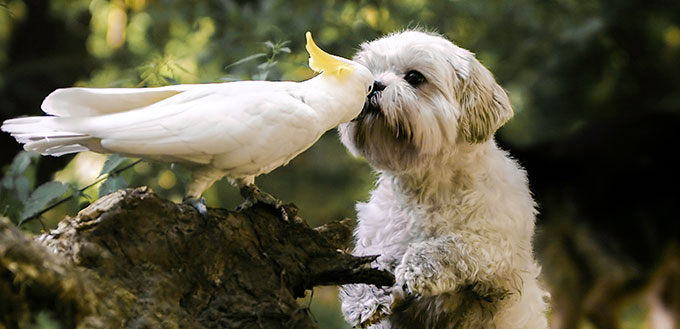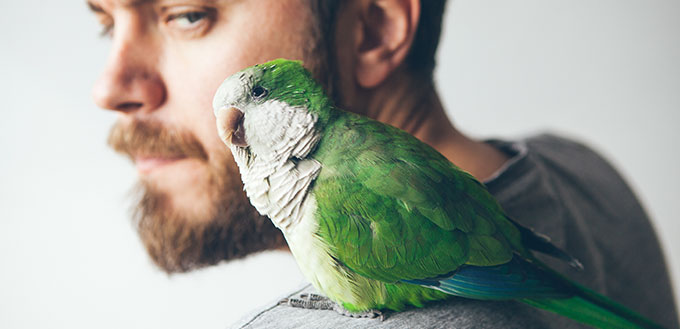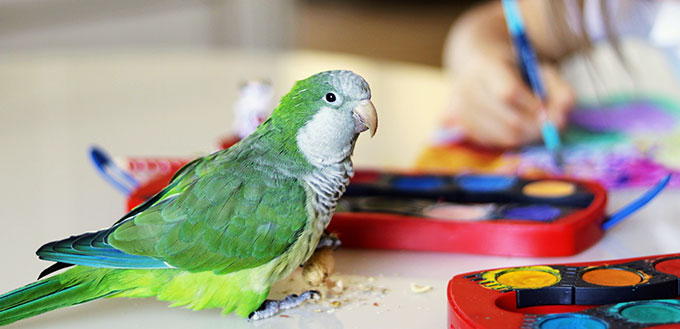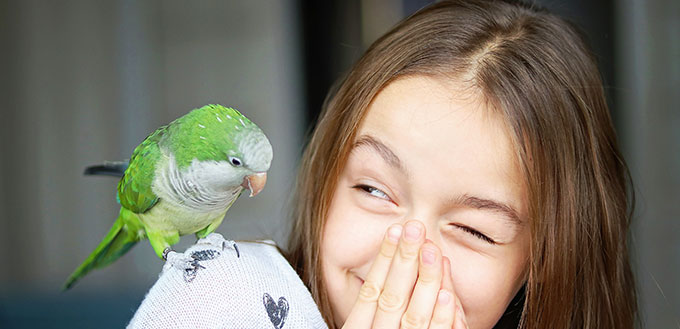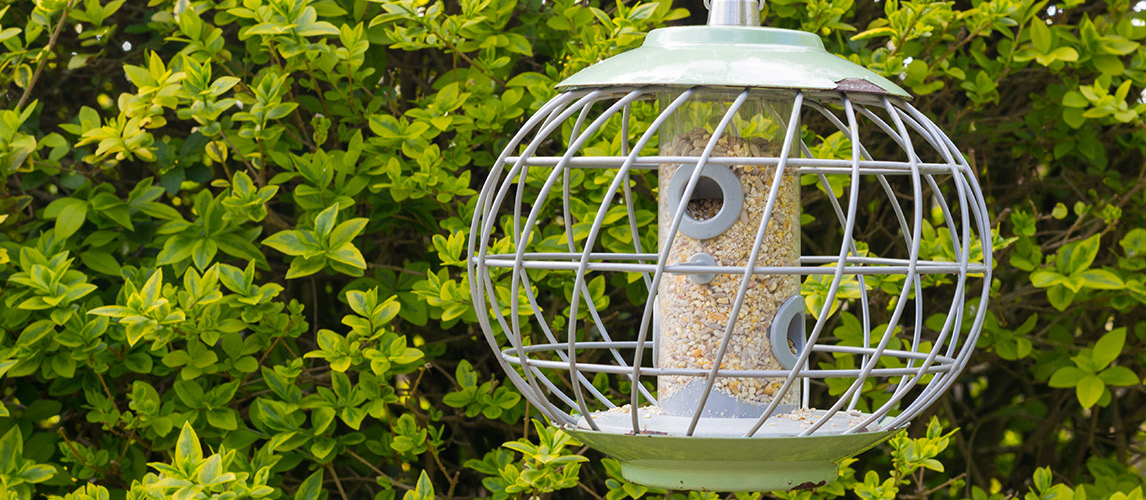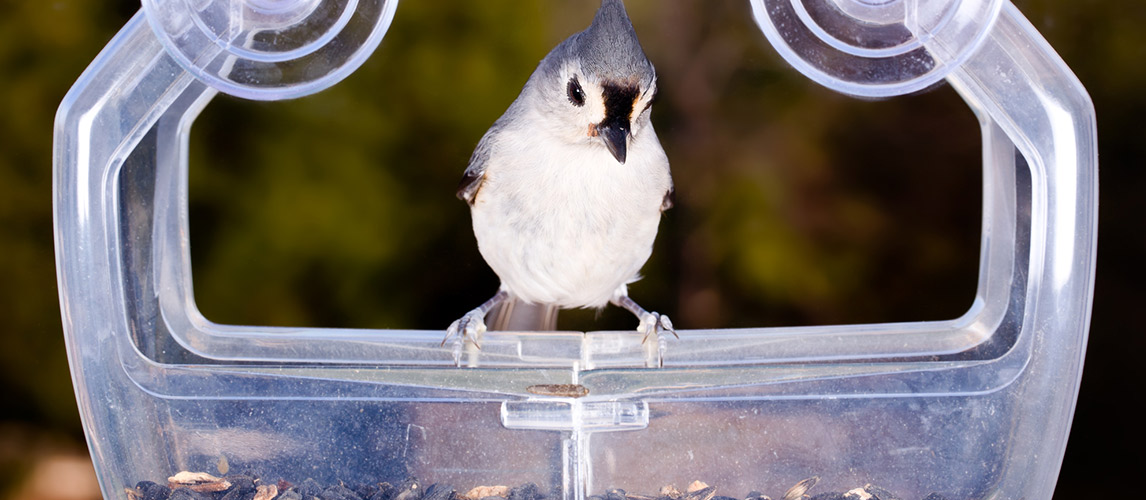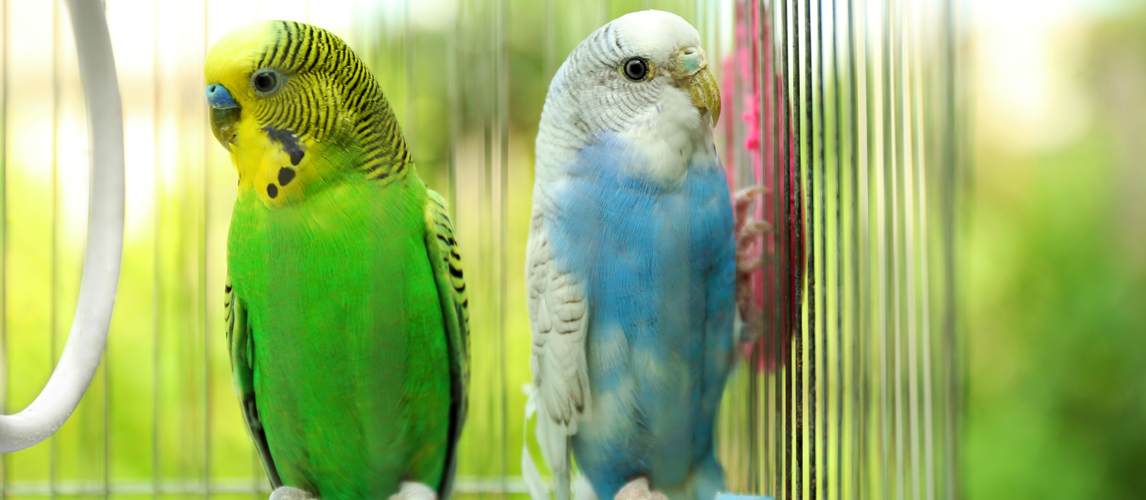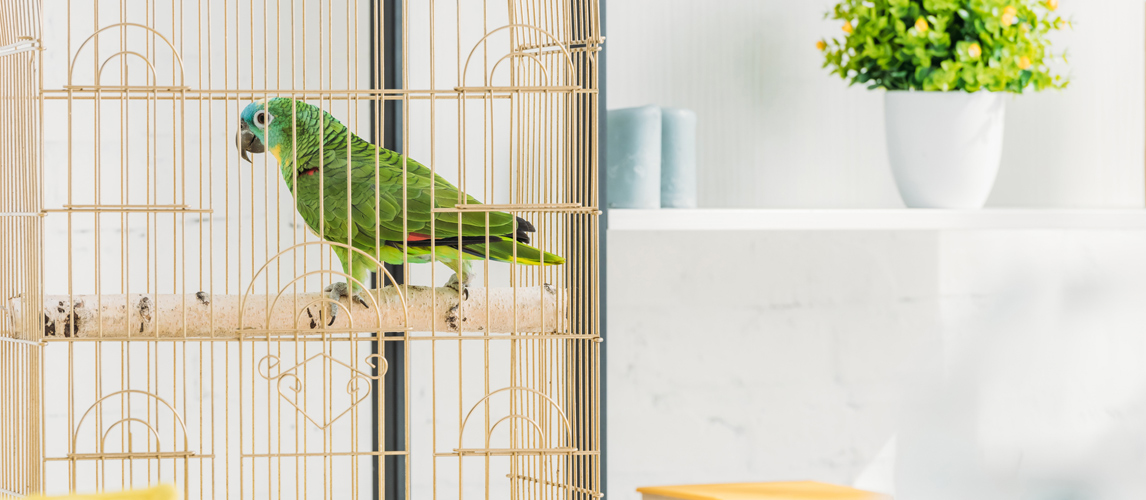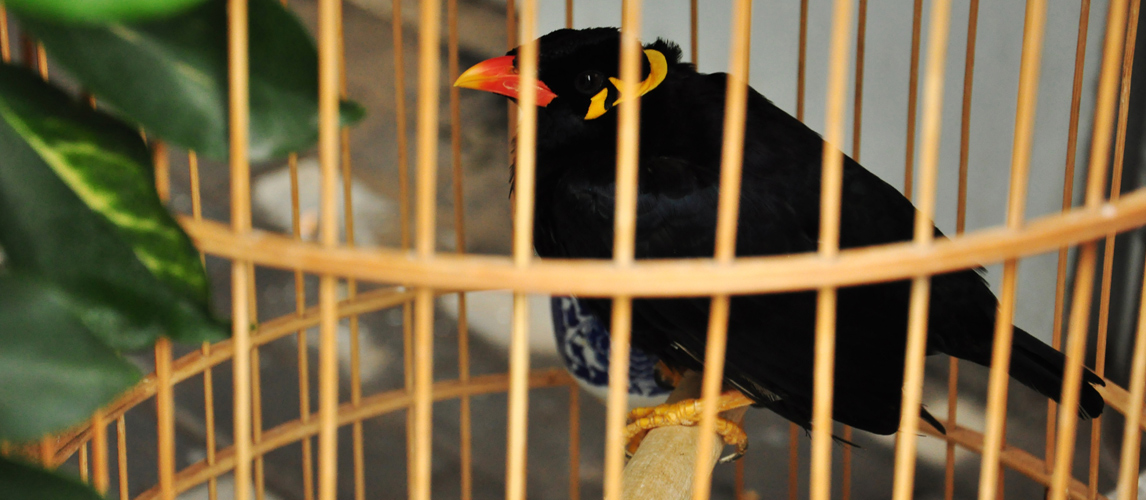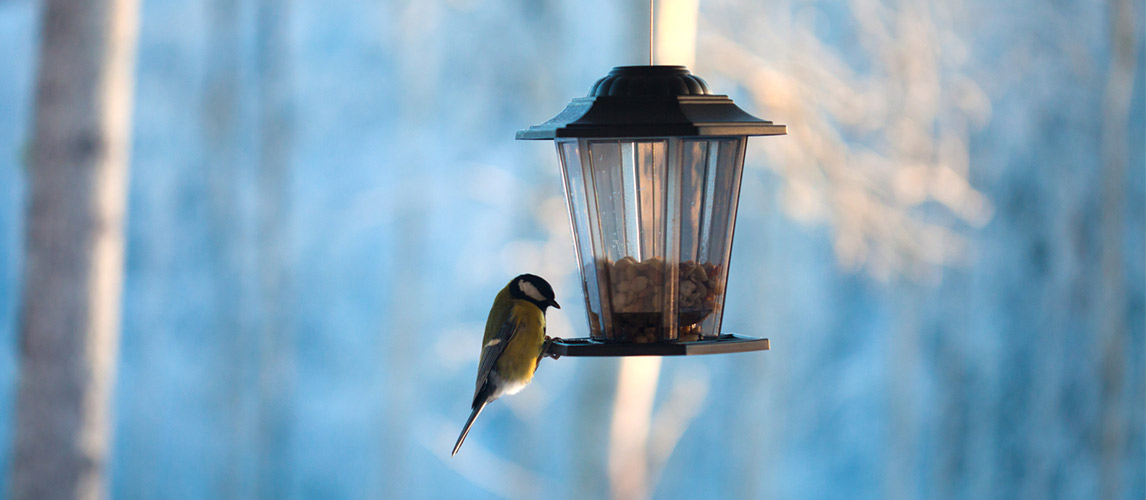Ever seen those super-tame parrots with an undying loyalty and ample love for their owners? If you want that kind of bond with your bird, you’ve come to the right place! We’re here to give you all the dos and don’ts to taming your parrot and gaining your bird’s trust. With just a little patience and some understanding, parrot training is easy. Simply follow the tips listed in this article and soon, your best bird friend will be sitting on your shoulder everywhere you go!
The Basics: How To Tame A Bird
If you want to train and tame your parrot pal, it’s worth understanding how birds interact with the things around them. Most birds are incredibly timid. You would be, too, if you had hollow bones and certain feline foes following you around. A bird’s sensitive nature can be both a help and a hindrance when it comes to training. But don’t worry, if you train your bird using the following tactics, your parrot is sure to be tame in no time.
- Give them time and space
Birds new to your home will need plenty of time to accustom themselves to their surroundings. It may take them a little longer to feel comfortable in their new home. To help them out, place your bird cage in a quiet space, near where you usually like to spend your time. Keep their cage away from loud areas, like the kitchen. This will get them used to your company.
- Speak in soothing tones
Like with any animal, your tone of voice is incredibly important to get them to trust you. When communicating with your bird, use soft, soothing tones. Speaking to birds can help them understand that you aren’t a threat to their wellbeing. You are, in fact, a friend!
- Use slower, gentler movements
Just like with tone of voice, your movements should be soft and gentle when first approaching your bird. It can be easy to get excited and reach out for feather rubs, but remember to take your time. Parrots and other birds need time to acclimate to their new surroundings. By moving slowly, your bird will quickly learn to trust you, ensuring they’ll be chilling on your shoulder in no time at all!
- Get them used to your hand
Your bird will become comfortable with you fairly quickly if you follow this advice. It’s important to remember that birds use all their senses to better access a situation. This includes sound, smell, and sight. You can use this to your advantage by being near them as often as you can.
To get them more used to you, put your hand against their cage (as long as it is safe to do so), and speak in calming tones. This is especially helpful during feeding them. After two weeks, you can try feeding them from the palm of your hand. Simply place some seeds in your open palm, right near their cage. This action can certainly help encourage your bird to interact with you, but don’t rush it. If your bird isn’t interested, then backpedal a little and return to calmly feeding them via their bowl at regular intervals.
These suggestions are great ways of introducing your bird to you and your shared home. However, taming a parrot can be slightly different. Keep reading to learn more about parrots and how best to work with them!
Taming Parrots
Your parrot is a unique type of bird in a myriad of ways. This includes their size, frame, and even how they socialize with other animals (including you). Most birds are happy with just one or two friends as their sole seed providers and social companions. The average parrot is also extremely sociable. They are known for being monogamous (like most humans!) and can live up to 90 years. In other words, a parrot will rely on you as their main source of interaction and socialization. Especially if there are no other birds around.
Better still, most parrot breeds are incredibly intelligent. Training your parrot is a great way to keep them mentally stimulated, also ensuring they are safe and sound. Interested? Read up on the process below.
The “Step Up” – Getting Your Bird to Sit On Your Finger Like a Perch
Certain parrots will automatically know how to “step up” – meaning when the bird transfers from their perch to your hand – simply if you hold out a finger. Sometimes it takes your whole hand, if they’re a larger bird. A younger parrot may need some basic training in this area. A great way to introduce this movement is to place your finger just under your bird’s breast and gently press against their body. It may take a few tries to get this right, as a young bird is more likely to try and fly away at the touch. If this happens, don’t chase them around their cage, as this will be seen as a threatening action. Instead, try again a little later. Next time you try, return with a treat. That should help motivate your bird buddy to step up onto your finger!
Finding the Best Treats to Tempt Your Parrot
Your new parrot is certain to be motivated by food – especially treats! Depending on their previous life and where you adopted them from, your bird may not have had much treat variety before. The good news is that it’s super easy to find, buy, or even make bird treats from scratch! All you need are the right seeds, nuts, and fresh and dried fruit, depending on their preferences.
The parrot is a much pickier eater than most other bird types. They will pick at food in order of their most to least favorite. This can be incredibly helpful, since a watchful owner will soon be able to notice their preferred treats. Lucky for you, many bird treats are ready-made for purchase at pet stores. These are also available for smaller breeds, such as parrotlets. Once you’ve figured out their favorites, training becomes much easier. You’ll know exactly how to entice your bird onto your hand and/or shoulder with these chosen delicacies!
Working With Older Parrots
Older parrots can be more aggressive and stubborn when it comes to being handled by humans. For this reason, owners may have a harder time taming an older bird. In these cases, it’s worth beginning your training at a distance and while your parrot is still in their cage. Simply step up to the cage with their preferred treats in-hand and encourage them to take the food through the bars. This is less about training and more about building up a level of trust between you and your bird. It certainly allows your parrot to feel at ease. They’ll know that being around you equals treats!
Utilize the Curiosity of Your Bird
Parrots are incredibly curious and love to explore, making basic training techniques easy! One way to encourage your bird to follow simple commands is by using a clicker. This tool functions the same way as training a dog. If the clicker scares your bird (as it may cause alarm for some), then you can opt for a short stick instead.
Use the stick to indicate where you want your parrot to go. This is done by training them to touch the stick with their beak. Hold the stick a few inches in front of their face: Not so close that it can be uncomfortable for them, but not so far that they would need to move to reach it. Once your bird has touched the stick, or gripped it in its beak, pass them a treat. Once your bird gets this down, you can place the stick in other parts of the room, or onto your shoulder, to encourage your bird to move to this spot next!
Quick Tips And Tricks For Taming Parrots
- Take your time.
- Never chase your parrot around their cage or force them to move somewhere they don’t want go.
- Learn your parrot’s favorite spots and use their favorite treats (see “how to” above).
- Always speak in a calm, soothing voice. Combine this with smooth, slow, and gentle movements.
- Always bird-proof your room before opening up a cage. That way, they can’t escape or go somewhere dangerous.
- Read up on each bird breed as much as you can before adopting. You should know their general breed tendencies and preferences.
- Your bird will be much happier to train during the morning and evening – when they’re at their hungriest!
- Be sure that guests and family members all use the same, basic techniques so that your bird can become accustomed to one training style and know what to expect.
Best Parrot Breeds To Tame And Train
Birds can be great company. They are relatively easy to tame and train, though some breeds have a better knack for it. These breeds possess a natural tendency to please and the right level of intelligence to work with humans. If you are interested in training an eager, intelligent bird and haven’t chosen your breed yet, here are some that would suit you best:
- Macaw
This breed is a great choice! Macaws are one of the most colorful parrot breeds, both in personality and in feathers. These intelligent birds are sassy and will soon let you know if they’re bored! Bare in mind that they require a larger space to exercise and fly. They are best suited to large homes and preferably ones with aviaries.
- African Grey
Another popular breed that is beloved by all bird lovers. Often considered the most intelligent bird on Earth, African Greys possess a wide emotional range and develop deep bonds with their owners. Anyone considering this breed type should know they are very sociable and have remarkable memories. They can also get grumpy if you don’t spend enough time with them, so keep that in mind when you leave them alone to go to work!
- Amazon
Known for their chattiness, these birds are best bought in pairs. The Amazon Parrot can develop a large vocabulary. They WILL pick up on the language you use (so best keep your cursing to a minimum!). These birds can develop behavioral problems if they aren’t given enough attention, so make sure you have the time before purchasing this parrot.
FAQ’s:
Q: How do you get a parrot to trust you?
A: The best way to ensure your parrot trusts you is to take your time and move on their terms. While it can be a little frustrating at times, especially with particularly cautious birds, it’s always worth starting slow. Once you’ve gained your parrot’s trust, it’ll be no time at all before they want to spend more time with you. That’s when they can be trained.
Q: How long does it take to tame a bird?
A: Remember that every bird is different. While some breeds are more friendly and willing to work with their owners than others, owners should also take into account the background of their new pet. They should be willing to take as long as needed to gain a strong level of trust. That said, for birds without any difficult backgrounds, it usually takes around 2 weeks for a bird to trust their owner.
Q: How can you tell if your bird is bonded to you?
A: Bonded birds will display excitement and pleasure at seeing you. These are usual visible signs, like chirping, excitedly bobbing their head up and down, or shaking their tail feathers. Others will simply try to copy you. For example, they’ll sit where you sit, watch TV with you, or simply follow you from room to room.
If a bird wants to be near you at all times, that is a sure sign they have bonded with you. Another good sign is if they keep trying to preen you. This involves them playing with your hair or giving you a nibble on the cheek, which is a pleasant little kiss for them. You may even find that your parrot tells you off when you leave, by banging their toys or screeching for your attention!
Q: How do parrots show affection?
A: There’s a wide range of ways that parrots show affection. Some of the most common signs include kisses, preening, squeaks for snuggles, and perching beside you frequently. Some birds may become so affectionate that they do some not-so-sweet things, including regurgitating their food for you or giving you nips as a request for more attention. Because of this, it’s important to create boundaries for your pet!
Sources:
- Dr. Ian Tizard, Parrots as Pets – Texas A&M College of Veterinary Medicine & Biomedical Sciences


